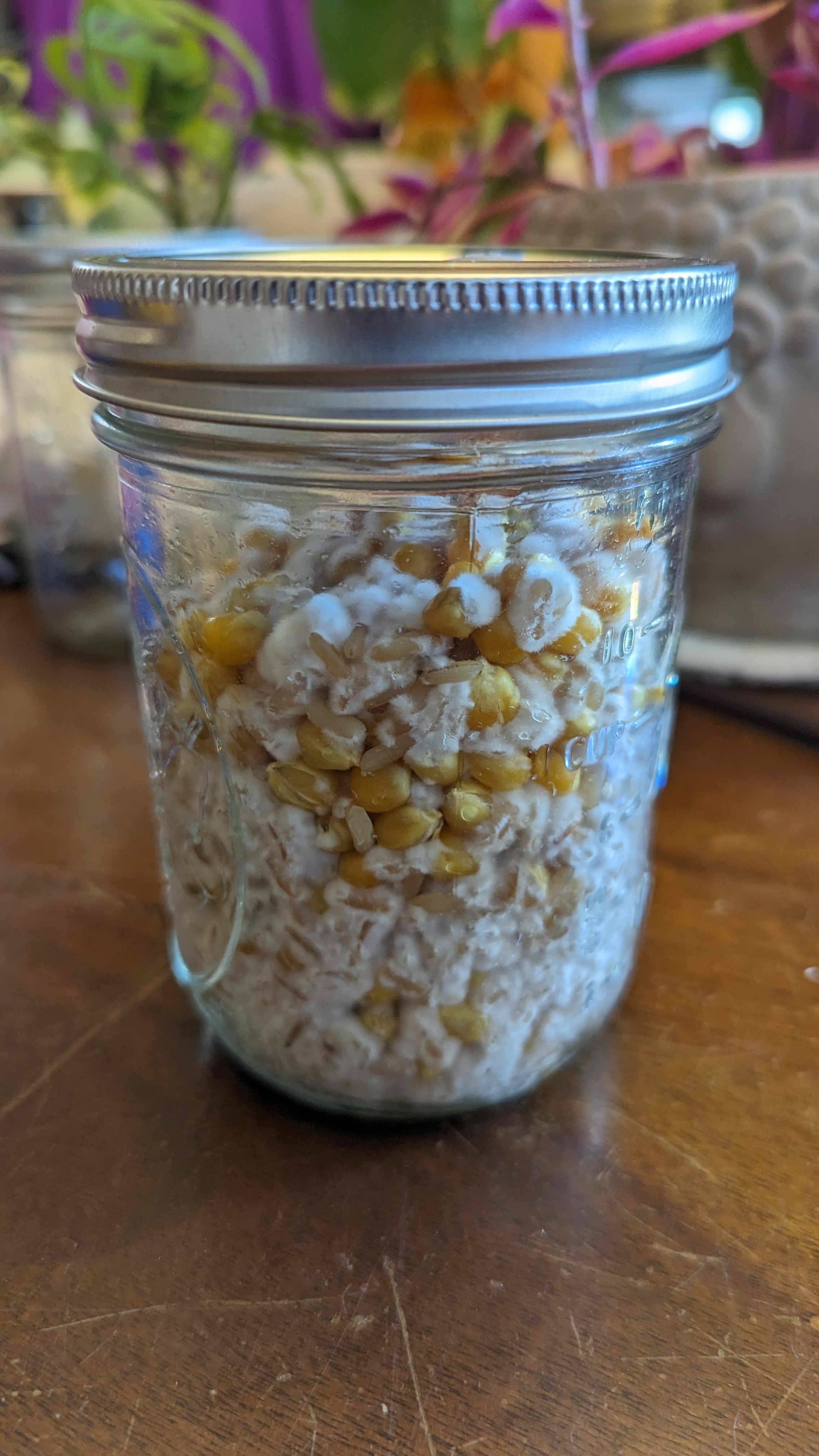this post was submitted on 17 Sep 2023
81 points (98.8% liked)
Mycology
3075 readers
37 users here now
founded 2 years ago
MODERATORS
you are viewing a single comment's thread
view the rest of the comments
view the rest of the comments

Not really into mushroom growing, but my guess is that since popcorn has a thick hull (which is why it pops when heated) it offers more of a barrier to the growing mycelium. I bet if the corn were cracked or flaked beforehand the fungus would be much more inclined to grow on the popcorn.
You are very much correct. The mycelium loves cracked kernels as it has easy access to the starch. Since the kernels are hydrated, the shells aren't as much of a barrier in a 100% popcorn jar.
What I find curious is that the mycelium is actively avoiding kernels in a more preferential manner. Since the nutrition value is lower, a slower propagation on the kernels is expected. However, it's just nope'ing around the popcorn until it absolutely has no other place to jump to. It's cool to see that the preference is so distinct.
This begs another question though, and someone else pointed it out: How long do you need to store the spawn for? Slowing down mycelium growth could have its benefits.
Edit: Derp. I completely forgot why the shells can be preferred. If you have to shake or stir your spawn jar to distribute the mycelium, the shells keep the kernels from sticking together as hard.